Electric Current is a directed flow of electric charge or particles of electricity such as electrons, ions, or holes. It is measured in terms of the rate of flow of electric charge through a conductor. The particles that cause electric current to flow through a material are called charge carriers. Depending on the type of conductor, there are various types of charge carriers, such as electrons, holes, and ions. For example, in metals, electric current flows due to the movement of electrons in a specific direction, while in electrolytes, electric current flows due to ions. In this article, I will explain all the important concepts of electric current, such as definition, types, formula, SI unit, and more.
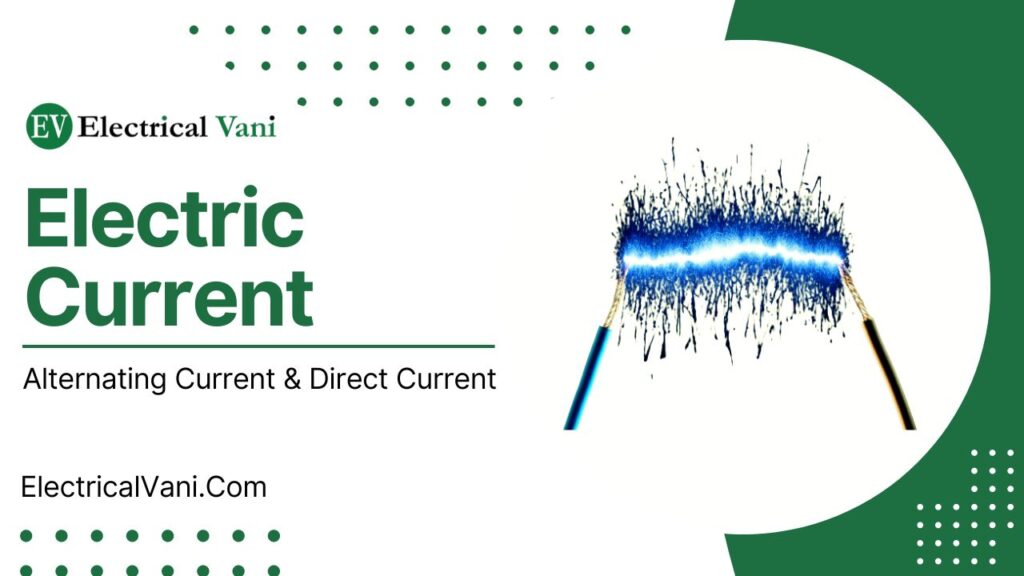
What is an Electric Current?
An electric current is defined as the flow of electric charge or charge carriers in a particular direction. In other words, the directed flow of electrically charged particles is termed electric current.
Electric current is used to run all the electrical and electronic appliances such as fans, motors, air conditioners, lamps, etc.
It is also important to note that electric current is a scalar quantity, as it does not have a relationship between its magnitude and direction of flow.
Symbol of Electric Current
Electric current is represented by the letter I or i. This symbol originated from a phrase in French “intensité du courant”, which means “current intensity” in English.
Today, the letter I is used as the symbol to represent electric current.
In electrical engineering studies, the capital letter I is used to denote a constant current, whereas the small-case letter i is used to denote the varying current.
Electric Current Formula
Mathematically, electric current is given as the rate of change of electric charge. In other words, the rate of flow of electric charge is termed electric current.
Therefore, the strength of the electric current can be given by,
$$I=\frac{Q}{t}$$
In differential form,
$$i=\frac{\text{d}q(t)}{\text{d}t}$$
Here, Q or q(t) is the electric charge in coulombs and t is time in seconds.
SI Unit of Electric Current
From the equation of electric current, we get the following unit of electric current,
$$\text{Unit of }I=\frac{\text{Coulomb }(C)}{\text{Second }(s)}$$
Hence, the base unit of electric current is Coulombs per second (C/s).
But, the SI unit of electric current is Ampere, denoted by the symbol A. Ampere as the unit of electric current is named in honor of André-Marie Ampère.
1 Amepere = 1 C/s
It can be defined as when 1 coulomb of electric charge passes through a certain length of a conductor in 1 second, then the current through the conductor is said to be 1 ampere.
Direction of Electric Current
As per Electron Theory Matter, the electric current flows through the conductor due to the movement of electrons. Electrons always travel from the negative terminal to the positive terminal. Hence, the actual direction of electric current is from the negative terminal to the positive terminal.
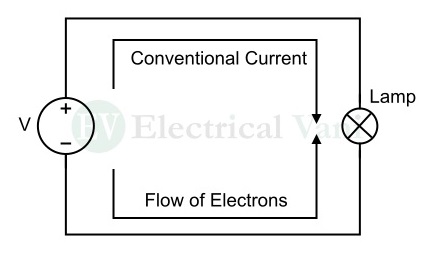
But initially, it was assumed that the electric current is due to the flow of positive charge i.e., from positive terminal to negative terminal. This convention is so firmly established that it is still used. Hence, the conventional direction of electric current is from the positive terminal to the negative terminal.
In short, the direction of electric current is from the positive terminal (+) to the negative terminal (-), which is opposite to the direction of the flow of electrons i.e., from the negative terminal (-ve) to the positive terminal (+ve).
Measurement of Electric Current
The strength and direction of electric current can be measured using either a galvanometer or an ammeter.
The galvanometer has a pointer that deflects on a calibrated scale to show the direction and strength of the electric current.
An ammeter, also known as an Ampere-Meter, is a specially designed instrument particularly used to measure the strength of electric current in a circuit.
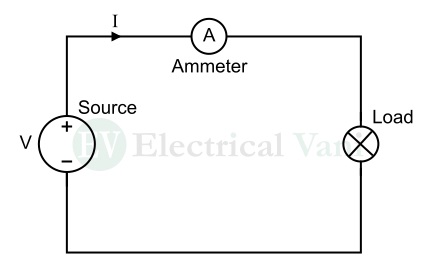
To measure electric current in a circuit, the instrument (galvanometer or ammeter) is connected in series of the circuit.
Types of Electric Current
Electric current can be classified into the flowing major two types:
- Direct Current (DC)
- Alternating Current (AC)
Let us discuss each type of electric current in detail.
(1). Direct Current (DC)
Direct current is a type of electric current that always flows in the same direction through a circuit.
Hence, the direct current always flows from the positive terminal (+) to the negative terminal (-). The direct current flows due to the movement of electrons from the negative terminal to the positive terminal through the circuit.
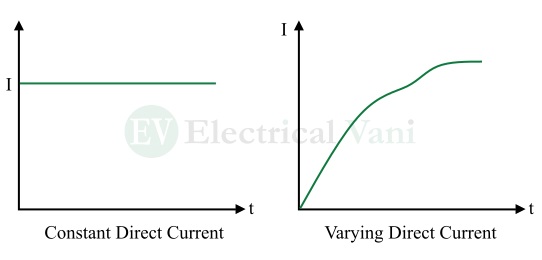
The direct current or DC can be further classified into Constant Direct Current and Varying Direct Current.
When the magnitude of direct current always remains constant with the change in time, it is called constant direct current. The constant direct current is denoted by the symbol I.
When the magnitude of direct current changes with the change in time, it is called time-varying direct current. It is represented by the symbol i.
It is important to note that the magnitude of direct current can be constant or varying, but its direction always remains fixed i.e., from the positive terminal to the negative terminal. Hence, the direct current is also referred to as unidirectional current.
(2). Alternating Current (AC)
An alternating current is a type of electric current whose magnitude changes continuously with time and whose direction changes periodically. It is represented by the symbol i.

Alternating current flows in alternate directions i.e., it flows in the forward direction for the first half-cycle, and then it flows in the reverse direction for the negative half-cycle.
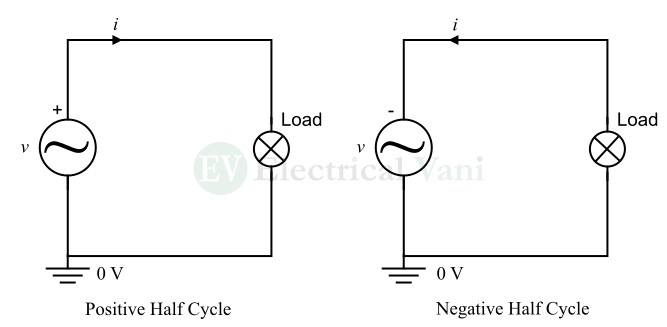
In actual practice, the alternating current has a sinusoidal waveform i.e., sine wave or cosine wave. But, in certain applications, other types of waveforms of alternating current like triangular waves, square waves, etc. are used.
It is important to note that the alternating current cannot be explained as the flow of charge from positive to negative or negative positive, instead, it is explained as the flow of charge in forward and reverse directions as depicted in the above figure.
Applications of Electric Current
Electric current is used in our everyday life to run or operate all electrical and electronic appliances. Some common examples of applications of electric current are given below.
- Electric current is used to run household appliances such as fans, refrigerators, TVs, air conditioners, etc.
- Electric current is also used to produce light, as in electric bulbs, tube lights, LED lights, etc.
- Electric current is used to do mechanical work, such as running a motor to pump water, driving the flour mills, etc.
- Electric current is also used to power our electronic gadgets like smartphones, mobiles, laptops, computers, etc.
- Electric current is also used in transportation to run electric trains and vehicles.
Conclusion
Hence, in this article, I have explained all the fundamental concepts associated with electric current. In conclusion, electric current is nothing but a directed flow of electric charge carriers like ions, electrons, holes, etc. Electric current always flows through conductors or metal, but it cannot flow through insulating materials, such as mica, wood, paper, rubber, etc.
If you have any related queries, please let me know in the comment section. I will answer shortly.